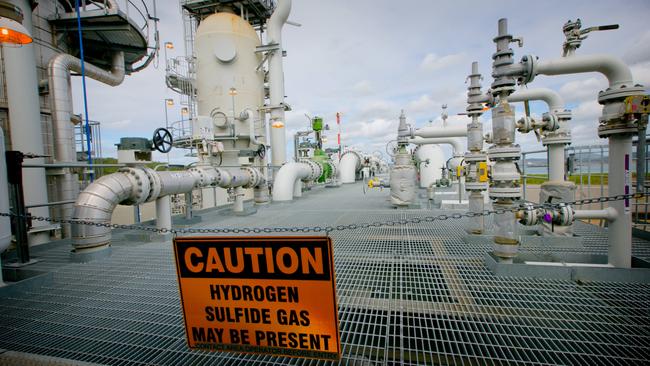A gas fix is in the pipeline

The ACCC’s ongoing inquiry into east coast gas supply reported that the “prices received for these spot cargoes were equivalent to, or below, Asian LNG spot prices”, which at the time of sale were below the LNG netback price (the international price of LNG less the cost of liquefaction and transport) of $6 per gigajoule.
During the same period, contracted gas prices on the east coast ranged from $8 to $11 per gigajoule.
Australian manufacturers need access to globally competitive gas prices to compete against the world, but according to the ACCC we’re paying far too much for gas at home.
As one of the world’s largest gas exporters, Australia is giving Japan, Korea and China a stable, competitive, long-term gas supply for industry and energy. The same suppliers are simply not offering the same benefits of Australian gas to Australians.
The profit made from Australian customers has become a huge subsidy to foreign users of our gas. And, despite the promise of improved access and affordability through the development of new gas fields, gas production, transmission and pricing remains firmly in the hands of too few.
Transportation prices
The much-awaited COVID-19 commission’s report into the future of manufacturing has already flagged how an efficient local gas market operating with globally competitive prices would turbocharge our economy.
Pipelines are the primary gas transportation mode in Australia, and they are a key component in determining the delivered cost of gas to all consumers. In its latest report, the ACCC found that the “monopoly pricing” first observed in its 2015 inquiry has continued, with prices charged by the majority of pipeline owners well above the rate of inflation and well below the expectation of what gas users need.
How is it that an inert piece of connecting infrastructure like a pipe is generating such high and “uncontested” returns? Why is it that customers of these pipelines are challenged to survive, while competing with overseas competitors who pay a fraction of the cost for key gas inputs?
The Andrew Liveris-led COVID manufacturing taskforce says that lower gas prices are still achievable, even on a sustainable basis, if the Australian government takes an active role in addressing our pipeline problem.
Liveris says the road to competitive gas prices involves lowering the cost of pipelines, reducing duplication and introducing tax incentives for priority pipeline infrastructure, which would ease “contractually congested” pipelines and open up access and greater competition.
Furthermore, in the absence of the competitive tensions of a functioning market, the “declaration” of a “natural monopoly” around pipelines would ensure policy action protects consumers and the national economy.
US market
Even in the US gas market, which is one of the most regulated in the world, pipeline owners, as well as producers and retailers, can offer “sharp pencil” prices to customers, at a level of certainty we simply don’t have.
The commodity suppliers of gas don’t make the biggest margins off the lowest value-add. The transparency of the published Henry Hub price ensures customers get competitive and highly visible prices for short-term spot purchases, as well as longer term contracts, which allow gas users to plan, innovate and invest growth capital with greater certainty.
Excessive profits in the US gas market are unable to survive for too long due to these competitive pressures.
Clearly, there is mounting evidence the federal government has a critical role to address our gas problem.
I am encouraged that the Prime Minister and his three key cabinet ministers responsible for industry, energy and resources are taking the NCCC’s recommendations seriously, recognising the huge boost that wise gas policy can bring to manufacturing, jobs, and the economy.
The ACCC’s elevation of netback pricing as a key concept to increase transparency and remedy the east coast gas market failure can also play a pivotal role. If properly refined and deployed as a parity pricing mechanism, the application of netback pricing will protect against the subsidising of exports by domestic customers, while still delivering respectable profits to producers.
Era of co-operation
Finding a solution to this problem together is critical. The national interest demands far greater co-operation between the states and the commonwealth, as well as gas producers, pipeline owners, and energy intensive manufacturers, to match our world-leading gas export credentials with a world-best deployment of this competitive advantage at home.
We can turn the COVID crisis into an opportunity, create jobs, and deliver the economic boost that many people are talking about. Yet, unless there is a genuine attempt to fix our gas problem now, the opportunity for a gas-fired recovery for Australia will be lost.
Stephen Bell is the chief executive of Qenos.

This month’s news of 18 export LNG cargoes being sold well below the prices being offered to the domestic market is further evidence of an east coast gas market failure.